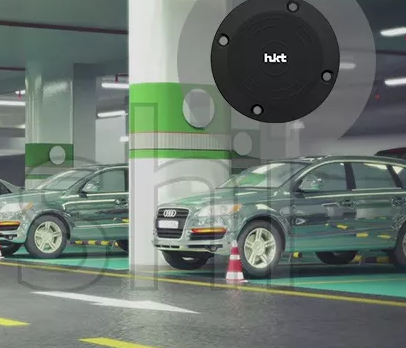How Does a LoRa Parking Sensor Work?
LoRa (Long Range) parking sensors have emerged as an innovative solution to address the growing challenges of urban parking management. By utilizing the power of the Internet of Things (IoT) and LoRaWAN (LoRa Wide Area Network) technology, these sensors offer an efficient and intelligent way to monitor parking spaces in real time. In this article, we will explore how LoRa parking sensors work and the benefits they bring to parking management systems.
Sensor Deployment:
LoRa parking sensors are small, battery-powered devices that are typically embedded in individual parking spaces or installed on parking lot surfaces. They are designed to detect the presence or absence of vehicles in real time.
Vehicle Detection:
When a vehicle occupies a parking space equipped with a LoRa parking sensor, the sensor detects the change in its status from vacant to occupied. This is accomplished through various technologies such as ultrasonic, infrared, or magnetic field detection. The sensor transmits this information wirelessly to a central gateway using the LoRaWAN protocol.
LoRaWAN Communication:
LoRaWAN is a low-power, wide-area network protocol specifically designed for IoT applications. The LoRa parking sensors use this protocol to transmit the occupancy status of the parking spaces to a central gateway or base station. LoRaWAN's long-range capability allows sensors to communicate over several kilometers, enabling efficient coverage of large parking areas.
Gateway Connectivity:
The central gateway acts as a bridge between the LoRa parking sensors and the parking management system. It receives the occupancy data from the sensors and forwards it to the cloud or a local server using internet connectivity such as Ethernet, Wi-Fi, or cellular networks.
Data Processing and Analysis:
The received data is processed and analyzed in real time to provide valuable insights into parking space availability. The parking management system uses this information to generate occupancy maps, provide real-time parking guidance to drivers, and optimize parking resource allocation.
User Interface and Applications:
The parking management system typically includes a user-friendly interface accessible through mobile applications, websites, or electronic signage. This interface allows drivers to check the availability of parking spaces in specific areas, reserve spots in advance, and navigate to the nearest vacant spot using the provided guidance.
Benefits of LoRa Parking Sensors:
Real-time information: LoRa parking sensors provide up-to-date information about parking space availability, saving drivers' time and reducing frustration.
Efficient resource utilization: Parking management systems can optimize the allocation of parking resources, reducing congestion and maximizing space utilization.
Environmental impact: By minimizing the time spent searching for parking, LoRa parking sensors help reduce vehicle emissions and promote sustainable transportation.
Cost-effective implementation: LoRaWAN's long-range capability and low-power consumption make the deployment of parking sensors more affordable and scalable compared to traditional wired systems.
Conclusion:
LoRa parking sensors offer an intelligent and efficient solution for managing parking spaces in urban areas. By leveraging LoRaWAN technology and IoT connectivity, these sensors enable real-time monitoring of parking occupancy, leading to enhanced convenience, reduced traffic congestion, and improved overall parking management. With their ease of deployment and scalability, LoRa parking sensors are paving the way for smarter and more sustainable cities.
334
0
0


Comments
All Comments (0)